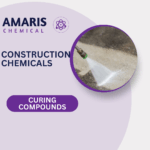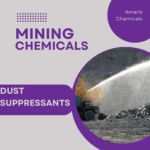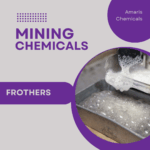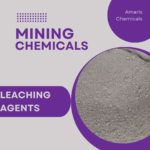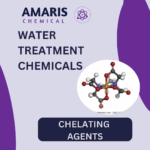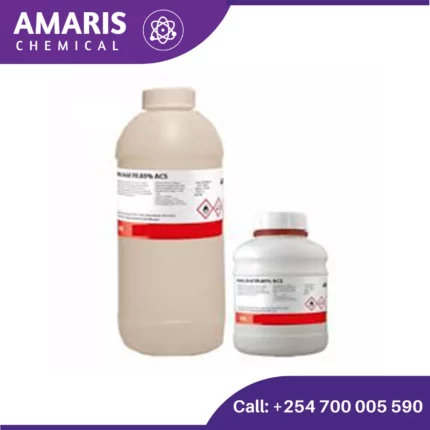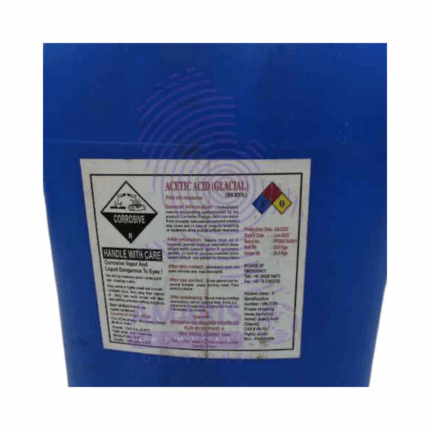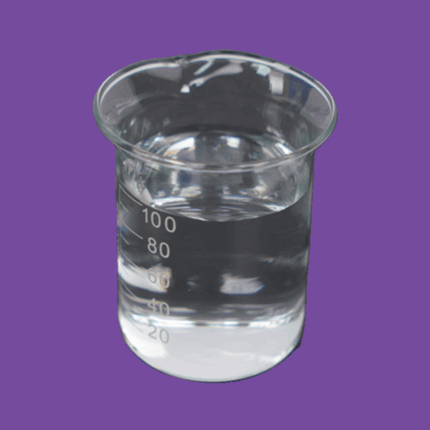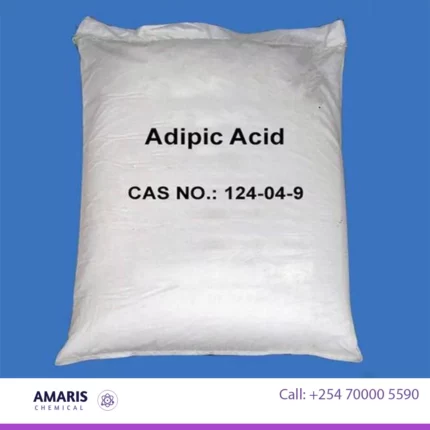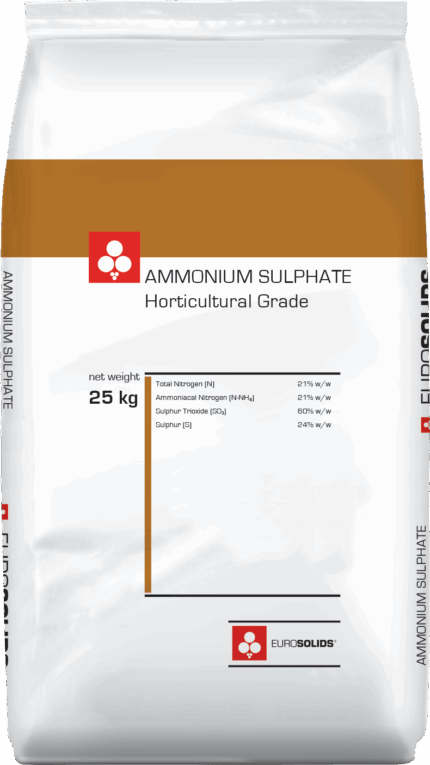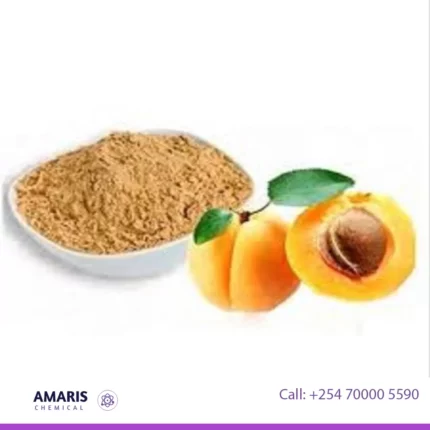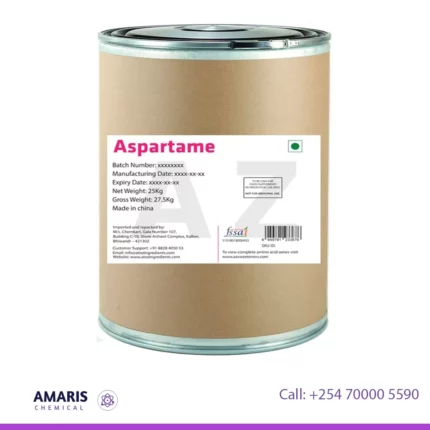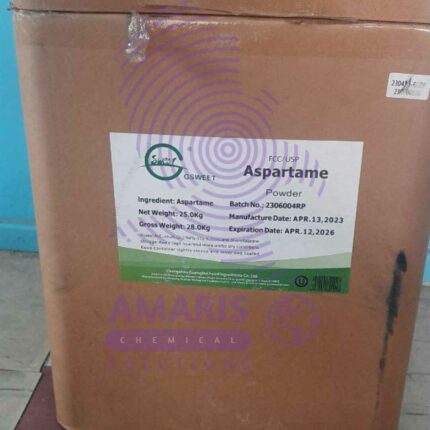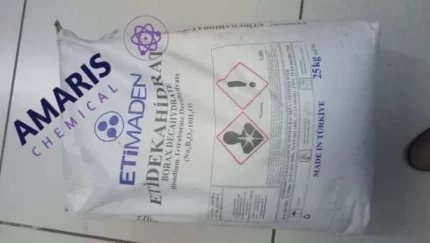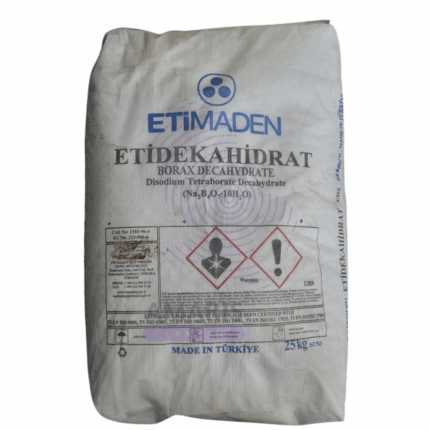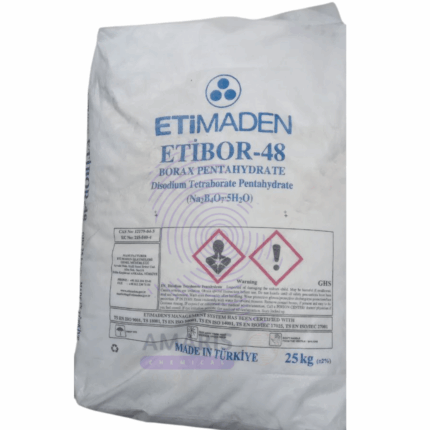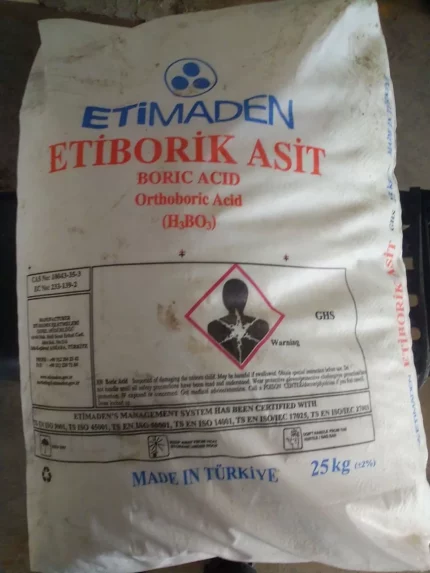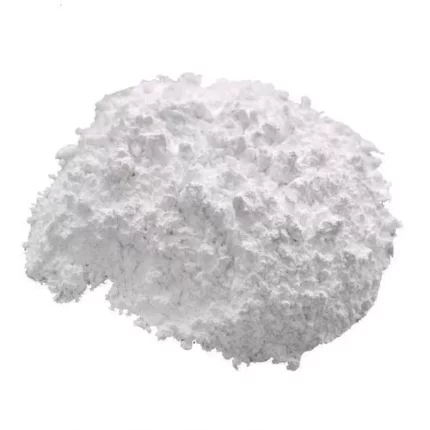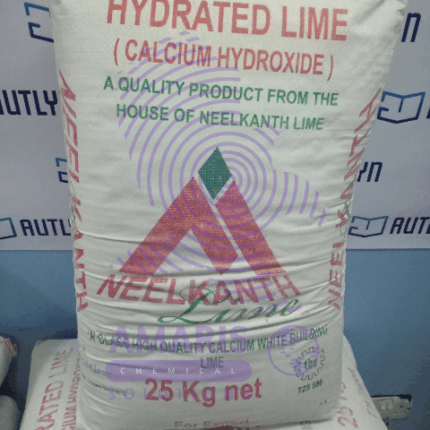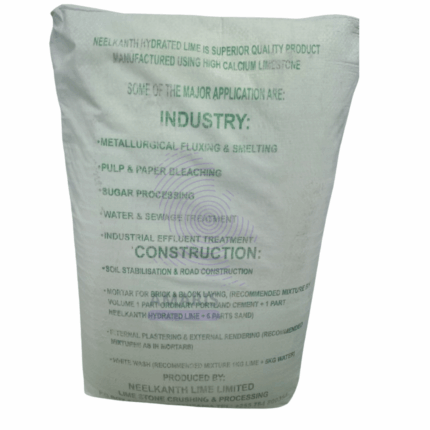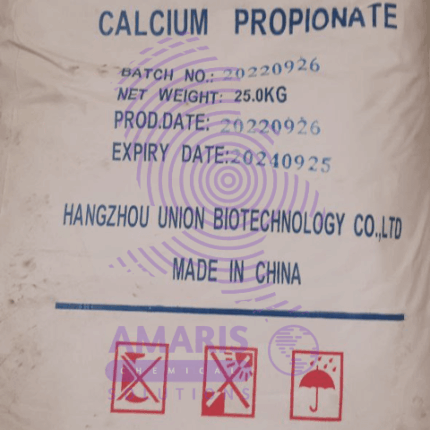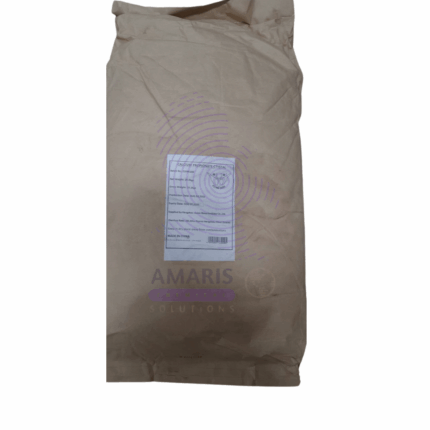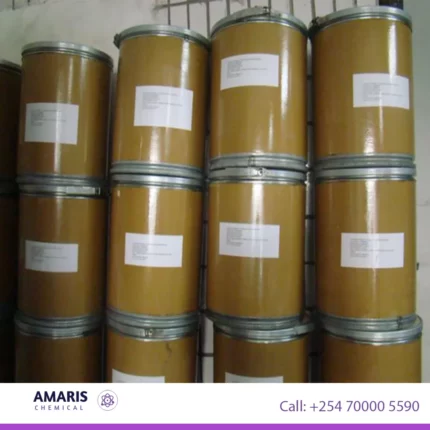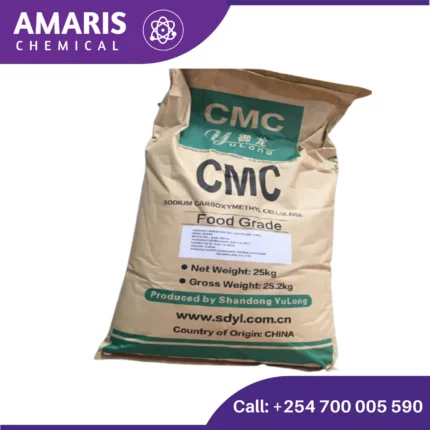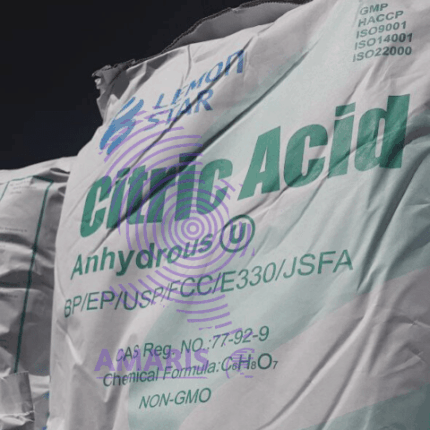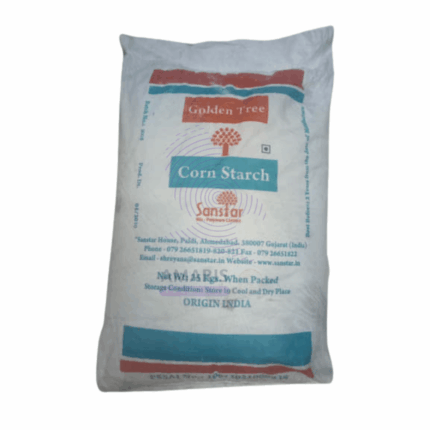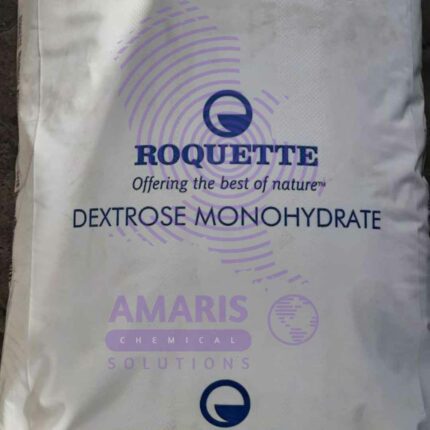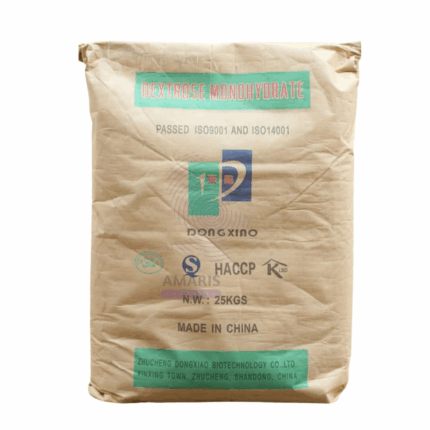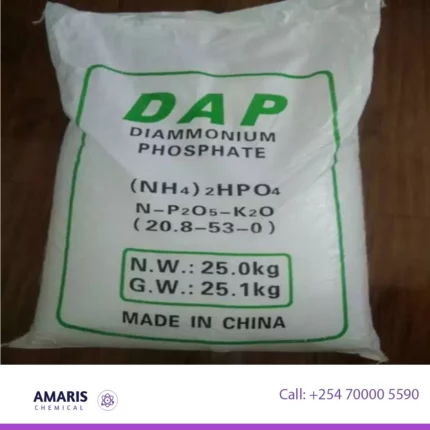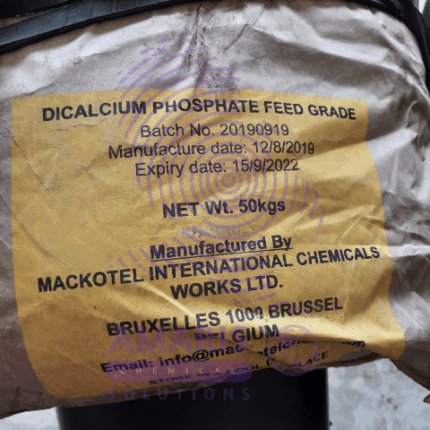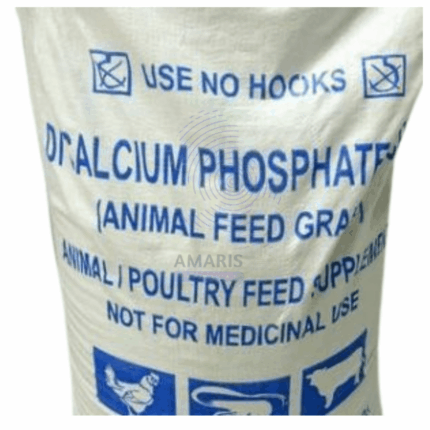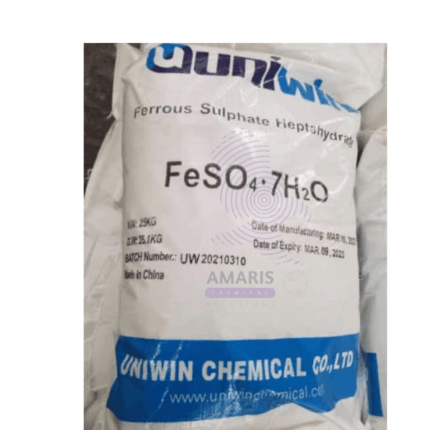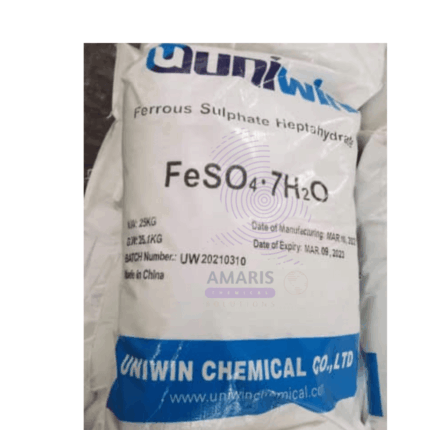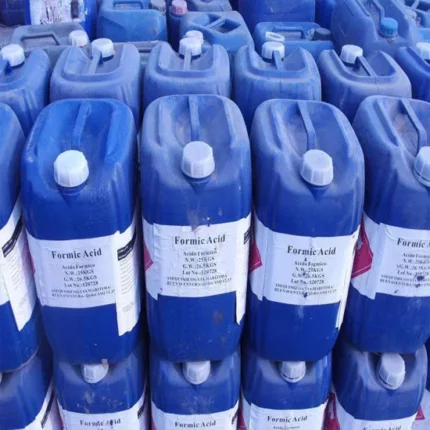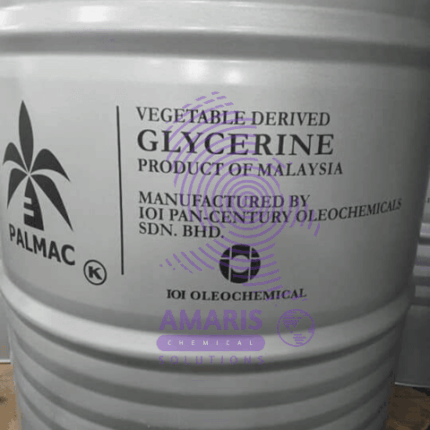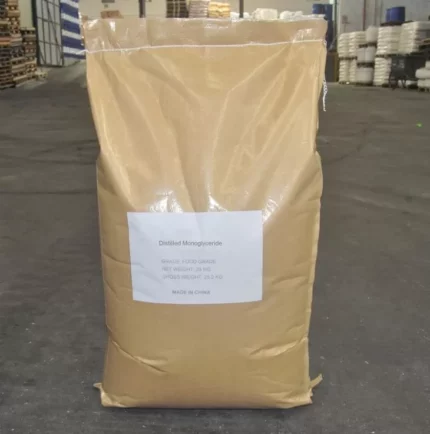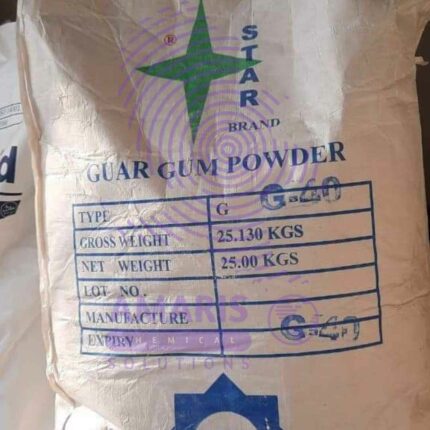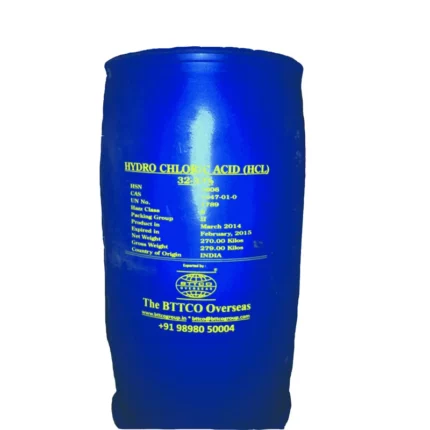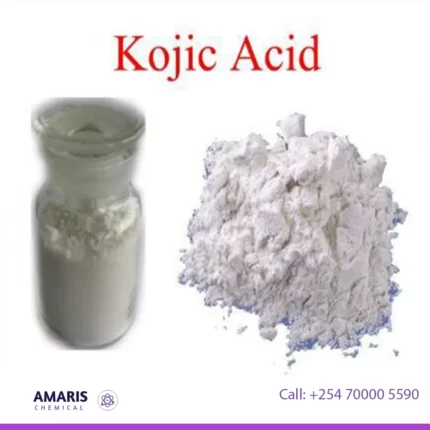Acesulfame K
Acesulfame K
Acesulfame K, also known as Acesulfame Potassium or Ace-K, is a high-intensity artificial sweetener that is commonly used as a sugar substitute in various food and beverage products. It is a white, odorless powder that is about 200 times sweeter than sucrose (table sugar), but it has no caloric value and does not affect blood sugar levels. Acesulfame K is chemically stable and can withstand high temperatures, making it suitable for use in baked goods and other heat-processed products. It is often found in sugar-free or low-calorie products, such as diet sodas, sugar-free chewing gums, desserts, and tabletop sweeteners.
Acetaldehyde
Acetaldehyde
Acetaldehyde is a simple organic compound with the chemical formula CH3CHO. It is a colorless liquid with a pungent, fruity odor. Here are some key points about acetaldehyde:
- Chemical Structure: Acetaldehyde consists of two carbon atoms, one oxygen atom, and four hydrogen atoms. Its structure is CH3CHO, where the carbon atom in the middle is doubly bonded to an oxygen atom and singly bonded to a hydrogen atom and a methyl group (CH3).
- Occurrence: Acetaldehyde can be found naturally in various ripe fruits, coffee, and heated milk. It is also produced by the oxidation of ethanol (alcohol) by enzymes in the liver and other tissues in humans, making it an intermediate product in alcohol metabolism.
Acetic Acid Food Grade
Acetic acid food grade is an organic acid with the chemical formula CH3COOH, also known as ethanoic acid. It is a colorless liquid with a pungent, sour taste and a distinctive vinegar-like odor. Acetic acid is an important industrial chemical used in the production of various products, including solvents, plastics, textiles, and food additives. It is also the main component of vinegar, which is commonly used as a condiment and preservative in cooking and food preparation.
Adipic Acid
Adipic acid, chemically known as hexanedioic acid (C₆H₁₀O₄), is a key industrial organic compound recognized for its role in polymer production. Primarily, it serves as a crucial precursor in the manufacture of nylon 6,6, where it reacts with hexamethylenediamine to form this durable synthetic polymer, widely used in textiles, automotive components, and industrial plastics. Beyond nylon, adipic acid is integral to producing polyurethane foams, found in mattresses, insulation, and car seats, due to its ability to enhance material flexibility and strength. It also finds applications as a food additive (E355), where it acts as an acidity regulator in gelatin desserts, beverages, and baked goods. Additionally, adipic acid derivatives are used in plasticizers for PVC products, synthetic lubricants, adhesives, and even cosmetics. While traditionally derived from petroleum-based processes, growing interest in sustainable alternatives has spurred research into bio-based production methods using renewable resources. Overall, adipic acid’s versatility makes it indispensable across multiple industries, from manufacturing to food technology
Ammonium Lactate
Ammonium lactate is a combination of lactic acid and ammonium hydroxide. It's commonly used as a moisturizer to treat dry, scaly, itchy skin conditions, such as ichthyosis vulgaris and xerosis. The lactic acid component helps to exfoliate dead skin cells, while the ammonium hydroxide component helps to moisturize and soften the skin. It's available in various forms, including lotions and creams, and typically requires a doctor's prescription for use.
Apricot Powder
Apricot powder refers to a finely ground form of dried apricots. It is made by dehydrating apricot fruits and then grinding them into a powder consistency. Apricot powder retains the natural flavor and nutritional properties of fresh apricots but in a concentrated form. It typically has a vibrant orange color and a slightly sweet and tangy taste.
Apricot powder is often used as a natural flavoring or ingredient in a variety of culinary applications. It can be added to smoothies, juices, yogurt, oatmeal, baked goods, and desserts to enhance their flavor with a hint of apricot. Additionally, apricot powder can be incorporated into spice blends, sauces, and marinades for savory dishes, adding a unique fruity note.
In addition to its flavoring capabilities, apricot powder is valued for its nutritional benefits. It is a good source of dietary fiber, vitamins (such as vitamin A and C), and minerals (such as potassium and iron). It can be used as a natural supplement to boost nutrient intake or to add nutritional value to various recipes.
Overall, apricot powder is a versatile and convenient ingredient that allows for the incorporation of the distinct flavor and nutritional qualities of apricots into a wide range of culinary creations.
Ascorbic acid
Ascorbic acid, also known as vitamin C, is a water-soluble vitamin that plays an important role in various physiological processes in the human body. It is an essential nutrient that cannot be produced by the body and must be obtained through dietary sources or supplements. Ascorbic acid acts as a powerful antioxidant, protecting cells and tissues from oxidative damage caused by free radicals. It also plays a critical role in the production of collagen, which is important for the health of skin, bones, and other connective tissues. Additionally, ascorbic acid is involved in the synthesis of neurotransmitters and the metabolism of proteins and fats. Deficiency in ascorbic acid can lead to a range of health problems, including scurvy, a condition characterized by fatigue, weakness, and bleeding gums.
Aspartame
Aspartame is a low-calorie artificial sweetener that is widely used as a sugar substitute in various food and beverage products. It is a non-saccharide sweetener, meaning it does not belong to the family of natural sugars like sucrose or fructose. Aspartame is composed of two amino acids, phenylalanine and aspartic acid, linked together with a methyl ester bond.
This sweetener is known for its intense sweetness, being approximately 200 times sweeter than sugar, which allows for its use in very small quantities to achieve the desired level of sweetness in food and drinks. Aspartame has gained popularity as an alternative to sugar due to its minimal impact on caloric intake, making it suitable for individuals aiming to reduce their sugar consumption or manage their weight.
Upon ingestion, aspartame is broken down into its component amino acids and a small amount of methanol, which is further metabolized into formaldehyde and formic acid. However, the quantities produced are well within the range deemed safe by regulatory authorities, and the body's natural metabolic processes handle them efficiently.
Borax Decahydrate
Borax decahydrate, also known as sodium borate, is a naturally occurring mineral composed of sodium, boron, oxygen, and water. It is a white, odorless powder that dissolves easily in water, and has a wide range of uses, including as a laundry detergent booster, a multipurpose cleaner, and as a component in the production of glass, ceramics, and enamel. Borax has antifungal and insecticidal properties and is also used in certain industrial applications such as in the production of fiberglass, as a flux in metallurgy, and as a fire retardant. It is considered safe when used as directed, but can be toxic if ingested in large quantities.
Borax Pentahydrate
Borax Pentahydrate, also known as sodium borate, is a naturally occurring mineral composed of sodium, boron, oxygen, and water. It is a white, odorless powder that dissolves easily in water, and has a wide range of uses, including as a laundry detergent booster, a multipurpose cleaner, and as a component in the production of glass, ceramics, and enamel. Borax has antifungal and insecticidal properties and is also used in certain industrial applications such as in the production of fiberglass, as a flux in metallurgy, and as a fire retardant. It is considered safe when used as directed, but can be toxic if ingested in large quantities.
Boric Acid
Boric acid is a weak, water-soluble acid that occurs naturally in some minerals, volcanic waters, and hot springs. It is a white, odorless, and crystalline powder that is often used as an antiseptic, insecticide, flame retardant, and in various industrial applications. Boric acid is also commonly used in households as an eyewash, as a preservative for food and cosmetics, and as an ingredient in some laundry and cleaning products. It is considered a safe and effective substance when used properly, but can be toxic in high doses.
Calcium Carbonate (uncoated)
Calcium Carbonate (uncoated) refers to a natural mineral substance that is composed of calcium carbonate without any additional coatings or surface treatments. It is a white, powdery material that is commonly used in various industrial applications, including the manufacture of paper, paints, plastics, and rubber products, as well as in construction, agriculture, and the food and pharmaceutical industries. Uncoated calcium carbonate is typically mined from natural deposits of limestone or chalk and is often ground into fine particles to achieve the desired particle size and purity for specific applications
Calcium Hydroxide(Hydrated lime)
Calcium Hydroxide(Hydrated lime) , also known as hydrated lime, is a chemical compound with the formula Ca(OH)2. It is a white, odorless, and alkaline substance that is produced by adding water to calcium oxide, also known as quicklime. The resulting reaction produces calcium hydroxide and releases a large amount of heat.
Hydrated lime is commonly used in various industrial applications such as water treatment, construction, agriculture, and food processing. It is also used as a pH regulator and a flocculant in wastewater treatment plants. Additionally, it is used in the production of cement, as a soil stabilizer, and in the manufacture of chemicals such as calcium stearate and calcium hypochlorite.
In summary, calcium hydroxide, or hydrated lime, is a chemical compound with various industrial applications, produced by adding water to calcium oxide.
Calcium propionate
Calcium propionate is a food additive that is commonly used as a preservative to prevent the growth of mold and other microorganisms in various food products. It is the calcium salt of propionic acid and is often referred to by its chemical formula, Ca(C2H5COO)2. Calcium propionate is white crystalline powder or granules that are easily soluble in water. When added to food, it helps extend its shelf life by inhibiting the growth of bacteria, fungi, and molds, thereby preventing spoilage. It is commonly used in baked goods, dairy products, processed meats, and other foods where mold and bacterial growth are a concern.
Calcium Saccharin
Calcium saccharin, also known as calcium cyclamate, is a synthetic sweetener derived from saccharin. It is a calcium salt of saccharin, and it is often used as a sugar substitute in various food and beverage products. Calcium saccharin is several hundred times sweeter than sugar, yet it contains no calories and does not affect blood sugar levels, making it suitable for individuals with diabetes or those looking to reduce their sugar intake. It is commonly used in tabletop sweeteners, diet sodas, baked goods, and other low-calorie or sugar-free products
CarboxyMethyl Cellulose (CMC) Food grade
CarboxyMethyl Cellulose (CMC) Food grade is a water-soluble polymer that is derived from cellulose, which is a naturally occurring polymer found in plant cell walls. CMC is produced by chemically modifying cellulose through the addition of carboxymethyl groups, which gives it its unique properties such as high water solubility, thickening ability, and film-forming properties.
CMC is widely used in a variety of industries, including food, pharmaceuticals, cosmetics, and textiles, as a thickener, binder, stabilizer, emulsifier, and dispersant. It is commonly found in food products such as ice cream, salad dressings, and baked goods as a thickener and emulsifier, as well as in cosmetics and personal care products such as toothpaste and shampoo as a binder and stabilizer.
Cellulose Ether
Cellulose ether are a group of water-soluble polymers that are derived from cellulose, which is the most abundant natural polymer on earth. Cellulose ethers are produced by chemically modifying the cellulose molecule through a variety of reactions, such as etherification or esterification, resulting in different functional groups attached to the cellulose backbone. These modifications can alter the physical and chemical properties of cellulose, making it more soluble in water and providing a range of functional properties, such as thickening, binding, stabilizing, and emulsifying, that make cellulose ethers useful in a wide range of industries, including food, pharmaceuticals, cosmetics, and construction.
Citric Acid Anhydrous
Citric Acid Anhydrous is a weak organic acid that occurs naturally in citrus fruits such as lemons, limes, oranges, and grapefruits. It is a tricarboxylic acid with the chemical formula C6H8O7 and is commonly used as a food additive, preservative, and flavoring agent. Citric acid is also used in the pharmaceutical industry, as a chelating agent in cleaning and personal care products, and in the production of cosmetics and detergents. It is a white crystalline powder with a sour taste and is soluble in water.
Corn Starch (food grade)
Corn Starch (food grade) is a fine, powdery substance derived from the endosperm of corn kernels. It is commonly used as a thickening agent in cooking and baking, as well as in other industries such as papermaking, textiles, and adhesives. Corn starch has a neutral flavor and a translucent appearance when mixed with liquid, making it a versatile ingredient in many recipes.
Corn Starch (Industrial grade)
Corn Starch (Industrial grade) is a fine, powdery substance derived from the endosperm of corn kernels. It is commonly used as a thickening agent in cooking and baking, as well as in other industries such as papermaking, textiles, and adhesives. Corn starch has a neutral flavor and a translucent appearance when mixed with liquid, making it a versatile ingredient in many recipes.
Dextrose Monohydrate
Dextrose monohydrate is a simple sugar derived from corn starch and commonly used as a food additive or sweetener. It is a white, crystalline powder that consists of glucose molecules with one molecule of water attached. Dextrose monohydrate is chemically identical to glucose and is often referred to as a glucose monohydrate.
In the food industry, dextrose monohydrate is valued for its sweet taste, high solubility, and ability to enhance flavors. It is frequently used in the production of confectionery, baked goods, beverages, and dairy products. Dextrose monohydrate is also utilized in pharmaceutical formulations, particularly as a source of energy for intravenous solutions or in oral rehydration products.
Overall, dextrose monohydrate is a versatile and widely used ingredient known for its ability to provide sweetness, solubility, and energy, making it a valuable component in various industries.
Diammonium phosphate (DAP)
Diammonium Phosphate (DAP) is a water-soluble ammonium phosphate salt with the chemical formula (NH₄)₂HPO₄. It serves as an important source of nitrogen (18%) and phosphorus (46%), making it widely useful in agriculture as a high-efficiency NP fertilizer to promote plant growth. Beyond farming, DAP is used as a yeast nutrient in winemaking/brewing, a fire retardant in industrial applications, and a corrosion inhibitor in water treatment systems. It also finds roles in animal feed supplements, pyrotechnics, and laboratory reagents. With its alkaline pH (~8.0) and solubility, DAP is versatile but requires careful handling due to ammonia release when heated.
Dicalcium phosphate
Dicalcium phosphate is a chemical compound with the formula CaHPO4. It is commonly used as a dietary supplement for its high calcium content, as well as a food additive and a pharmaceutical excipient. Dicalcium phosphate can be produced by reacting calcium carbonate or calcium hydroxide with phosphoric acid. It exists in various forms, including anhydrous and dihydrate, and is commonly used in the production of fertilizers, animal feed, and dental products.
Ethyl Acetate
Ethyl acetate is a widely used organic compound with the chemical formula C₄H₈O₂, known for its pleasant, fruity odor and excellent solvent properties. As a fast-evaporating ester, it serves as a key ingredient in industries such as paints, coatings, and printing inks, where it acts as a low-toxicity thinner and drying agent. In the pharmaceutical sector, it is utilized for drug extraction and tablet coatings, while the food industry employs it as a flavoring agent to impart fruity notes in candies and beverages. Its effectiveness as a degreaser makes it valuable in electronics and metal cleaning. Additionally, ethyl acetate finds applications in cosmetics, adhesives, and even as a biodegradable alternative in decaffeination processes. Despite its advantages—such as being relatively non-toxic and environmentally friendly—it is highly flammable and requires careful handling. Overall, ethyl acetate's versatility, mild odor, and solvent efficiency make it indispensable across multiple industrial and commercial applications.
Ferrous Sulphate Heptahydrate
Ferrous Sulphate Heptahydrate is a chemical compound with the formula FeSO4, which is made up of iron, sulfur, and oxygen. It is a type of salt that is commonly used as a nutritional supplement and a medicine to treat iron deficiency anemia. Ferrous sulfate is also used in various industrial applications, such as water treatment, fertilizers, and pigments. In its solid form, ferrous sulfate appears as a white or grayish-white crystalline powder, and it is soluble in water.
Formic Acid
Formic acid is a colorless, pungent liquid with a chemical formula of HCOOH. It is the simplest carboxylic acid, naturally occurring in certain fruits and vegetables and in the venom of some ants. It has a wide range of industrial applications as a preservative, antibacterial agent, solvent, and in the production of textiles, leather, rubber, and other materials. It also has some medical applications and is used in organic chemistry reactions as a reducing agent. However, formic acid is highly corrosive and can be dangerous if ingested or inhaled in large quantities.
Glycerin Food Grade
Glycerin Food Grade, also known as glycerol, is a colorless, odorless, viscous liquid that is sweet-tasting and non-toxic. It is a type of alcohol with three hydroxyl (OH) groups, and is commonly used in various industries such as pharmaceuticals, cosmetics, food, and personal care products. Glycerin has numerous applications, including as a solvent, humectant, emollient, and lubricant, among others. It can be derived from both plant and animal sources, and is also produced as a byproduct of soap and biodiesel manufacturing.
Glycerol Monostearate GMS
Guar gum
Guar gum is a natural, water-soluble polysaccharide extracted from the seeds of the guar plant (Cyamopsis tetragonoloba), which is grown mainly in India and Pakistan. It is commonly used as a thickener, stabilizer, and emulsifier in a wide range of food and non-food products, including baked goods, dairy products, sauces, dressings, beverages, personal care products, and industrial applications. Guar gum has excellent viscosity and water-binding properties, and it can improve the texture, mouthfeel, and shelf life of many products
Kojic Acid
Kojic acid is a naturally occurring compound that is derived from various fungi, particularly Aspergillus oryzae. It is widely used in the cosmetic and skincare industry for its skin-lightening and brightening properties. Kojic acid functions as a tyrosinase inhibitor, which means it hinders the production of melanin, the pigment responsible for skin color. By inhibiting melanin production, kojic acid helps to reduce the appearance of dark spots, hyperpigmentation, and uneven skin tone, resulting in a more even complexion. Additionally, kojic acid possesses antioxidant properties, which can help protect the skin against free radicals and promote a more youthful and radiant appearance.
Tetrasodium EDTA
Tetrasodium EDTA , also known as ethylenediaminetetraacetic acid tetrasodium salt, is a chemical compound commonly used in various industrial and commercial applications. It is a chelating agent, meaning it has the ability to bind and capture metal ions, thus preventing them from reacting with other substances or causing unwanted effects.
A concise definition of tetra sodium EDTA would be:
"Tetra sodium EDTA is a water-soluble salt derived from ethylenediaminetetraacetic acid, used as a chelating agent to bind and sequester metal ions, serving purposes such as metal complexation, stabilization, and preventing undesired chemical reactions."


 Emollients
Emollients Humectants
Humectants UV Filters
UV Filters Surfactants (cosmetic)
Surfactants (cosmetic) Preservatives (cosmetic)
Preservatives (cosmetic) Fragrances and Essential Oils
Fragrances and Essential Oils Antioxidants (cosmetics)
Antioxidants (cosmetics)
 Solvents (lab)
Solvents (lab) Chromatography Chemicals
Chromatography Chemicals Microbiology and Cell Culture Reagents
Microbiology and Cell Culture Reagents Biochemical Reagents
Biochemical Reagents Inorganic and Organic Standards
Inorganic and Organic Standards Spectroscopy Reagents
Spectroscopy Reagents Molecular Biology Reagents
Molecular Biology Reagents
 Precious Metal Extraction Agents
Precious Metal Extraction Agents
 Plasticizers
Plasticizers Polymerization Initiators
Polymerization Initiators Stabilizers
Stabilizers Monomers
Monomers Fillers and Reinforcements
Fillers and Reinforcements Antioxidants (plastics)
Antioxidants (plastics) Colorants (plastic pigments,Dyes)
Colorants (plastic pigments,Dyes)
 Fertilizers
Fertilizers Plant Growth Regulators
Plant Growth Regulators Soil Conditioners
Soil Conditioners Animal Feed Additives
Animal Feed Additives Biostimulants
Biostimulants
 Dough Conditioners
Dough Conditioners Flour Treatments
Flour Treatments Fat Replacers
Fat Replacers Preservatives (baking)
Preservatives (baking)
 Surfactants (cleaning)
Surfactants (cleaning) Builders
Builders Bleaching Agents
Bleaching Agents Enzymes
Enzymes Solvents (cleaning)
Solvents (cleaning) Fragrances
Fragrances Disinfectant
Disinfectant Metal cleaning
Metal cleaning
 Binders/Resins
Binders/Resins Pigments
Pigments Solvents (paint)
Solvents (paint) Additives
Additives Driers
Driers Anti-Corrosion Agents
Anti-Corrosion Agents Specialty Coatings
Specialty Coatings Functional Coatings
Functional Coatings Application-Specific Coatings
Application-Specific Coatings
 Sealants and Adhesives
Sealants and Adhesives
 Biodegradable Surfactants
Biodegradable Surfactants Bio-based Solvents
Bio-based Solvents Renewable Polymers
Renewable Polymers Carbon Capture Chemicals
Carbon Capture Chemicals Wastewater Treatment Chemicals
Wastewater Treatment Chemicals
 Preservatives (food)
Preservatives (food) Flavor Enhancers
Flavor Enhancers Acidulants
Acidulants Sweeteners
Sweeteners Emulsifiers
Emulsifiers Antioxidants (food)
Antioxidants (food) Colorants (food)
Colorants (food) Nutrient Supplements
Nutrient Supplements Nutraceutical Ingredients
Nutraceutical Ingredients
 Fresh Herbs
Fresh Herbs Whole Spices
Whole Spices Ground Spices
Ground Spices Spice Blends
Spice Blends
 Surfactants(oil)
Surfactants(oil)
 Antibiotics
Antibiotics Active Pharmaceutical Ingredients
Active Pharmaceutical Ingredients Excipients
Excipients Vaccine Adjuvants
Vaccine Adjuvants Nutraceutical Ingredients
Nutraceutical Ingredients Solvents (pharmaceutical)
Solvents (pharmaceutical)
 Automotive chemicals
Automotive chemicals Pyrotechnic Chemicals
Pyrotechnic Chemicals


 Vulcanizing Agents
Vulcanizing Agents Accelerators & Retarders
Accelerators & Retarders Antidegradants
Antidegradants Reinforcing Agents
Reinforcing Agents Plasticizers & Softeners
Plasticizers & Softeners Fillers & Extenders
Fillers & Extenders Blowing Agents
Blowing Agents Adhesion Promoters
Adhesion Promoters






